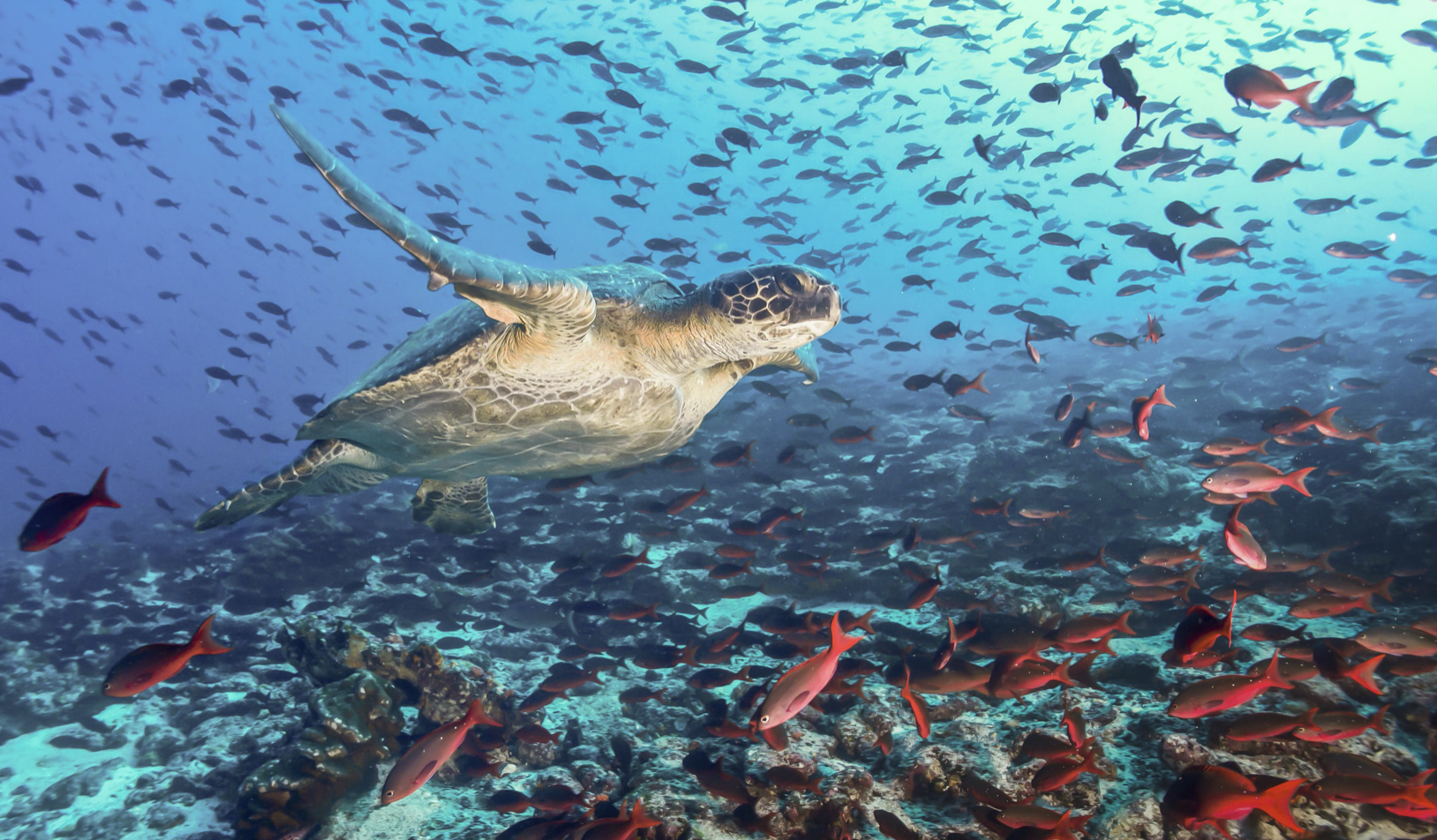New marine reserve for Galapagos Islands
Ecuador has announced the creation of a new marine reserve in Galapagos, expanding the current protected area by 60,000 km2.

The reserve, announced at COP26 in Glasgow, will create half of a proposed corridor called for by scientists that could connect protected areas of the Galapagos Marine Reserve with Costa Rica’s Cocos Island. And if that marine reserve is completed it would create a safe migration route for migratory endangered marine species such as hammerhead and whale sharks, and leatherback and green sea turtles.
'Ecuador’s action to create the Ecuadorian part of the Cocos-Galapagos Swimway is an exciting and major step forward for the protection of critically endangered migratory species.' says Todd Steiner, executive director of Turtle Island Restoration Network and founding board member of MigraMar, two of the organizations leading the call for the Swimway. Turtle Island has been working for nearly a decade to bring this idea to fruition and Steiner says the organisation will continue to provide more scientific justification work to convince Ecuador to expand its size in the future. 'And now we need Costa Rica to expand a fully protected area from Cocos Island to the Ecuador border to complete the Swimway, and fully protect the magnificent and critically endangered species in the Eastern Pacific.'
Of the new area, 30,000 km2 will be located on the Cordillera de Los Cocos, where no fishing activity is permitted. There will be an area of no longline fishing for 30,000 square kilometers northwest of the Galapagos Marine Reserve.
More than 150 environmental organisations, thousands of scientists and members of the public are calling for the Cocos-Galapagos Swimway to be completed urgently.
'It is now in the hands of the Costa Rican government to match the actions of Ecuador and complete the Swimway that will protect the ecological and economic integrity of these nations for future generations' said Mariano Castro, Turtle Island Restoration Network's Legal & Policy Analyst.
In addition to moving Ecuador towards the 30x30 goal of reaching 30 per cent marine protection by 2030, this announcement will help protect the economy of the region by protecting the marine biodiversity so many visitors travel to the Galapagos and Cocos Island to see.
The Galapagos National Park has an area of 8,000 km2 and is considered by experts as the best conservation state in the world due to 97 per cent of its island territory being a National Park and more than 130,000 square kilometers of its waters being a protected marine reserve. Ninety five percent of the species registered in Galapagos are unique to the region.
* The UK Government presently advises people to avoid travel to Ecuador unless strictly necessary and to exercise extreme caution should they need to go.